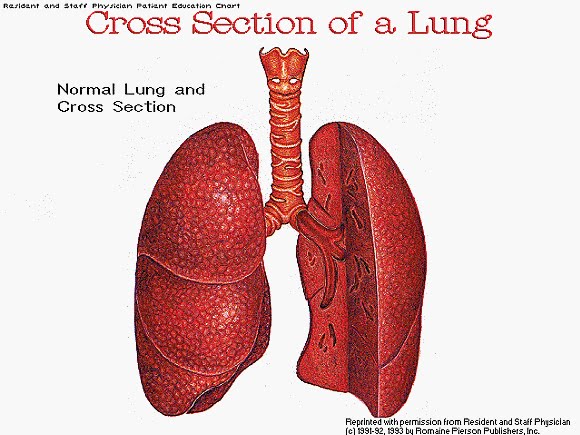d:\dp\0005\00058.TXT
************************************************************************
00058
What is Organic Dust Toxic Syndrome?
dusts hay breathing mold Respiratory System Organic Dust Toxic
Syndrome inhalation spores moldy silage pulmonary mycotoxicosis silo-loader
syndrome muscle aches cough shakes chills fever headaches breath shortness
sweating chest pain anorexia ventilated ventilation inhale inhaling breathe
lung lungs headache
VolumeH-5, A-5
Log
Cross Section of the Lung*0005901.scf
Anatomy of the Bronchial Tree*0005902.scf
Anatomy of the Alveoli*0005903.scf
What is Organic Dust Toxic Syndrome?
------------------------------------------------------------------------------
QUESTION: I thought I had a bad case of the flu. Instead, the doc diagnosed
my case with a rather frightening name, that I still don't understand. What
is organic dust toxic syndrome?
------------------------------------------------------------------------------
ANSWER: It is a nonallergic, noninfectious respiratory illness caused by
the inhalation of organic dust or exposure to agricultural products such as
hay or spores from mouldy silage in a confined area. The disease,
scientifically termed pulmonary mycotoxicosis is also known as silo-loader's
syndrome since its periodic outbreaks usually occur amongst farmers when they
remove the cured feed from silos.
Symptoms of the illness include muscle aches and a pronounced cough,
accompanied by shakes, chills, fever, headaches, shortness of breath,
sweating, chest pain and anorexia. The duration of the illness can last
anywhere from a couple of hours to an entire week depending on the length of
exposure and how adequately or inadequately the area is ventilated. There has
been no evidence of an allergic or viral cause of the illness and there is
rarely, if ever, a need for an afflicted person to require hospitalization.
I'm sure that if you go back over your history, you will discover why
this diagnosis was made, and will now provide you with important clues to
prevent its reoccurrence.
----------------
The material contained here is "FOR INFORMATION ONLY" and should not replace
the counsel and advice of your personal physician. Promptly consulting your
doctor is the best path to a quick and successful resolution of any medical
problem.
************************************************************************
00058
What is Organic Dust Toxic Syndrome?
dusts hay breathing mold Respiratory System Organic Dust Toxic
Syndrome inhalation spores moldy silage pulmonary mycotoxicosis silo-loader
syndrome muscle aches cough shakes chills fever headaches breath shortness
sweating chest pain anorexia ventilated ventilation inhale inhaling breathe
lung lungs headache
VolumeH-5, A-5
Log
Cross Section of the Lung*0005901.scf
Anatomy of the Bronchial Tree*0005902.scf
Anatomy of the Alveoli*0005903.scf
What is Organic Dust Toxic Syndrome?
------------------------------------------------------------------------------
QUESTION: I thought I had a bad case of the flu. Instead, the doc diagnosed
my case with a rather frightening name, that I still don't understand. What
is organic dust toxic syndrome?
------------------------------------------------------------------------------
ANSWER: It is a nonallergic, noninfectious respiratory illness caused by
the inhalation of organic dust or exposure to agricultural products such as
hay or spores from mouldy silage in a confined area. The disease,
scientifically termed pulmonary mycotoxicosis is also known as silo-loader's
syndrome since its periodic outbreaks usually occur amongst farmers when they
remove the cured feed from silos.
Symptoms of the illness include muscle aches and a pronounced cough,
accompanied by shakes, chills, fever, headaches, shortness of breath,
sweating, chest pain and anorexia. The duration of the illness can last
anywhere from a couple of hours to an entire week depending on the length of
exposure and how adequately or inadequately the area is ventilated. There has
been no evidence of an allergic or viral cause of the illness and there is
rarely, if ever, a need for an afflicted person to require hospitalization.
I'm sure that if you go back over your history, you will discover why
this diagnosis was made, and will now provide you with important clues to
prevent its reoccurrence.
----------------
The material contained here is "FOR INFORMATION ONLY" and should not replace
the counsel and advice of your personal physician. Promptly consulting your
doctor is the best path to a quick and successful resolution of any medical
problem.


